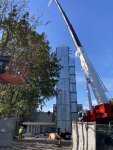bigpicture7
Senior Member
- Joined
- May 5, 2016
- Messages
- 3,909
- Reaction score
- 9,561
The permanent vacancies at the low rent tax payer across Washington slightly towards downtown points to the fact that these dumpy spaces are not exactly what is in demand right now.
No, that's not obviously what that means at all. When a "dumpy" structure has vacancy for an extended period, there are several other prominent themes that could be at play (and I would argue are more likely to be at play): 1) the owner of the building is considering selling sometime soon and doesn't want unfavorable long-term leases, so they set the rent high at a lousy value given the state of the property intentionally; 2) the rent is indeed low, but the building has serious issues with a near-absentee landlord so no retail renter is going to touch it; 3) the building isn't even on the rental market because the owner is simply land-banking; 4) the building was recently sold and the new owner is just waiting for the remaining leases to expire and several retail slots remain vacant in the mean time; 5) someone is actually paying rent but not using the storefront (catering companies do this all the time; I know an auto repair shop that stores tires in an old sandwich shop and the front windows are ply-wooded over).
The Globe did a feature article a few years before the pandemic on Arlington Center regarding some of the example situations I outlined above:
Arlington Center has a vacancy problem
So, unless you know that the place is a) in reasonable safe operating condition, b) is actually on the rental market, c) the owner isn't intentionally trying to gouge or hold out, you do not actually know that there's no demand.
Last edited:



